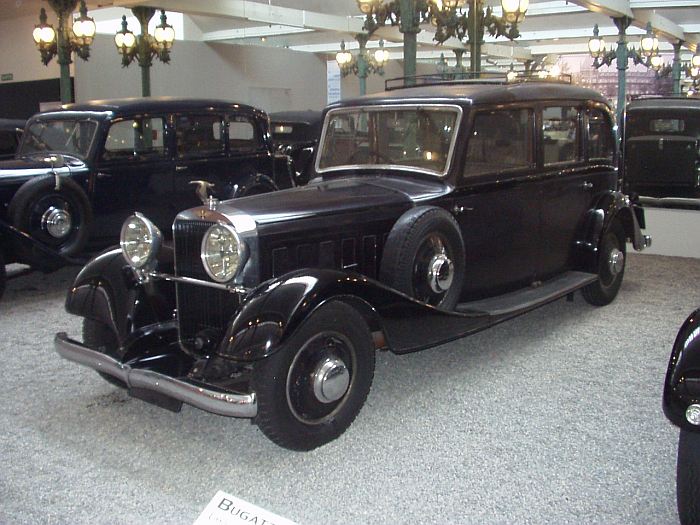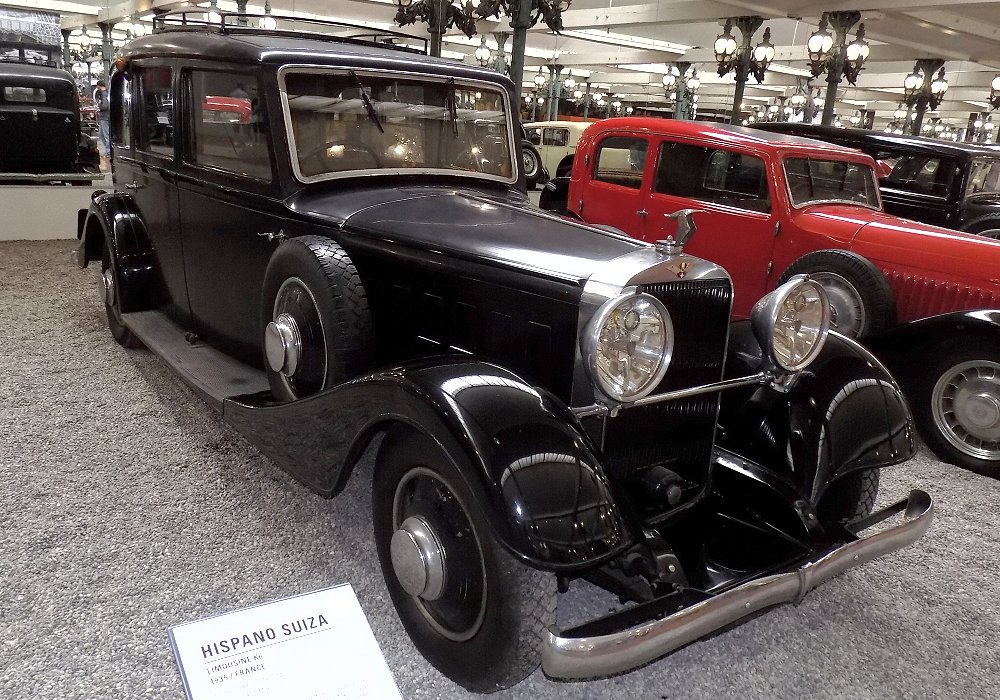Description
The Hispano-Suiza K6 Limousine was one of the finest examples of refined motoring elegance from the 1930s, a car that represented the perfect balance between technological sophistication, comfort, and understated grandeur. Introduced in 1934 as the successor to the celebrated H6 series, the K6 was designed to uphold Hispano-Suiza’s reputation as a maker of the world’s most advanced and aristocratic automobiles. The limousine configuration, with its stately proportions and dignified presence, was the purest expression of that philosophy.
Mechanically, the K6 was a masterpiece of precision engineering. Under its long bonnet sat a 5.2-litre inline six-cylinder engine with a single overhead camshaft, developing around 120 horsepower. This powerplant was derived directly from Marc Birkigt’s expertise in aircraft engine design—smooth, reliable, and remarkably refined. Like the larger V12 J12 model, the K6’s engine was constructed to the highest standards of balance and durability, allowing for serene performance and exceptional longevity. The car was capable of reaching 140 km/h (87 mph), yet it delivered that speed with almost complete mechanical silence and the effortless torque that was a Hispano-Suiza hallmark.
The chassis was equally advanced. Built with a rigid steel frame and featuring independent front suspension, it provided both strength and comfort, absorbing road irregularities with ease. The car also employed Hispano-Suiza’s patented servo-assisted braking system—one of the great technical innovations of the interwar period—ensuring precise and controlled stopping power for a vehicle of such mass. The result was a limousine that combined grace and authority on the road, capable of smooth, unhurried travel over great distances with unmatched refinement.
The K6 Limousine’s bodywork was typically crafted by the finest coachbuilders of the day, such as Kellner, Henri Chapron, Vanvooren, or Saoutchik. Each car was built to order, and no two were identical. The limousine configuration usually featured an enclosed rear compartment for passengers and a separate front section for the chauffeur, reflecting the traditions of the elite clientele who commissioned them. The proportions were stately, with a long wheelbase, tall roofline, and gracefully curved fenders that lent the car an air of quiet majesty. The large chrome radiator, adorned with Hispano-Suiza’s stork mascot—a tribute to the company’s aviation heritage—announced its presence with restrained dignity rather than ostentation.
Inside, the K6 Limousine was an environment of absolute luxury. The passenger compartment was lined with the finest materials: hand-polished wood veneers, sumptuous leather or silk upholstery, and thick wool carpeting underfoot. Many examples included folding tables, storage compartments, and delicate details such as clock sets, mirrors, or writing accessories. The soundproofing was exceptional, ensuring near-total silence for the occupants, while the ride was smooth and unruffled, the product of meticulous suspension tuning and precise chassis balance.
For the driver, the K6 was a pleasure to operate—a rarity among limousines of its time. The steering, though firm, was direct and predictable, and the gearbox was engineered with a crisp, mechanical feel. The car’s servo-assisted brakes gave it stopping power well beyond that of its contemporaries, while the engine’s abundant torque allowed for relaxed, effortless driving even at low speeds. It was this combination of technical refinement and usability that made the K6 such an admired and enduringly respected automobile.
The K6 Limousine found favor among Europe’s aristocracy, industrial leaders, and diplomats, who valued its quiet sophistication and mechanical perfection. It offered nearly all the refinement of the grander J12, but in a more manageable size, making it ideal for both city use and long-distance touring. Its exclusivity was ensured by its cost—well beyond the reach of all but the wealthiest clients—and by the individuality of each coachbuilt example.
Production of the K6 continued until 1937, with only around 200 chassis completed in total, making every surviving car today a rare collector’s treasure. The limousine versions, in particular, stand out for their imposing beauty and enduring craftsmanship, embodying the very essence of Hispano-Suiza’s motto: “The car that defies time.”
Today, the Hispano-Suiza K6 Limousine is celebrated not just as a luxurious automobile, but as a work of art. It represents the last great flowering of European bespoke carmaking before the Second World War—a period when technology, elegance, and artistry were in perfect harmony. With its silent power, dignified styling, and impeccable construction, the K6 Limousine remains one of the most dignified and timeless expressions of 1930s automotive excellence.



